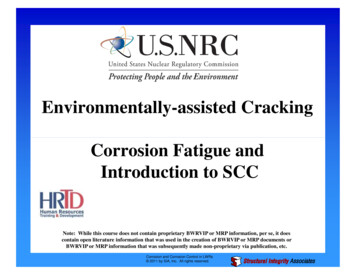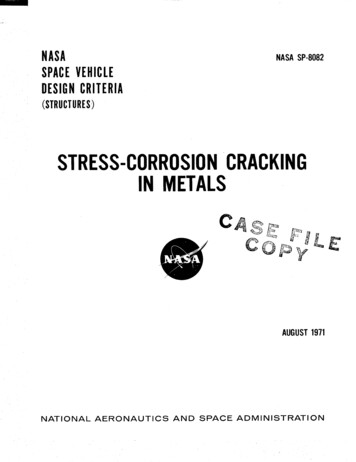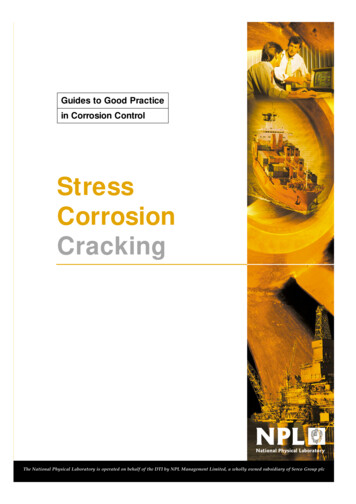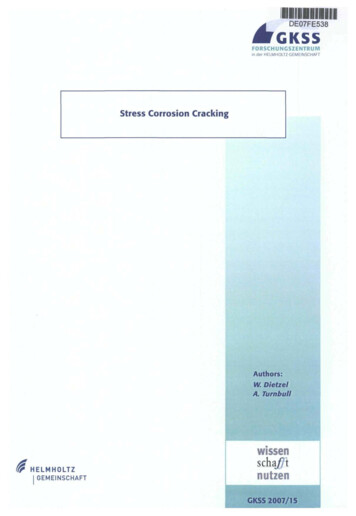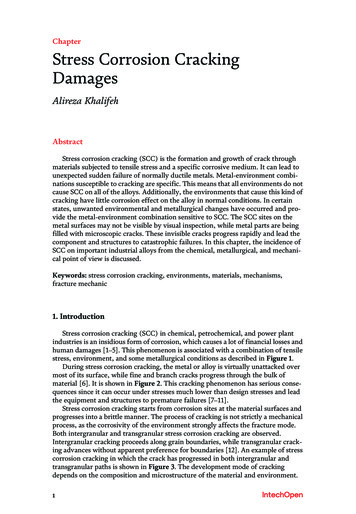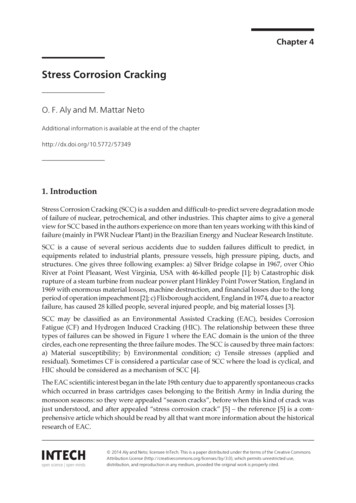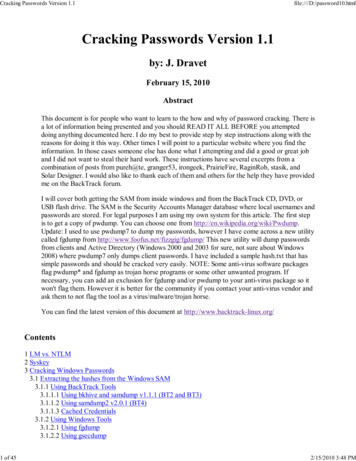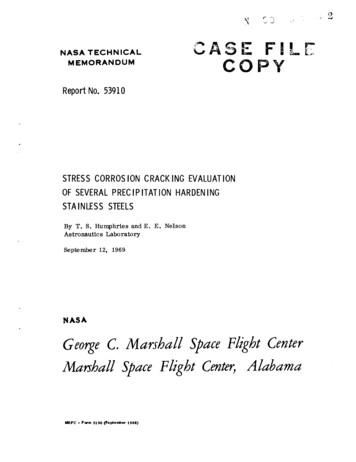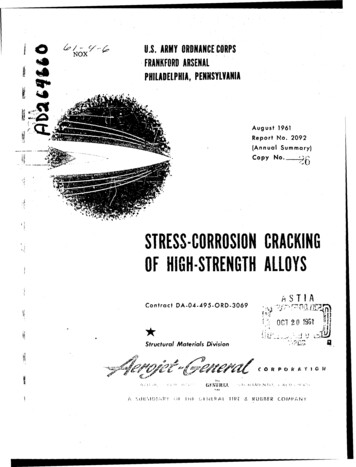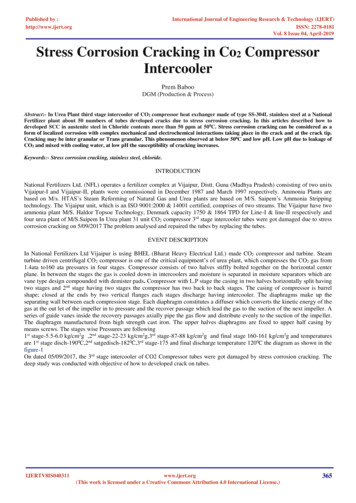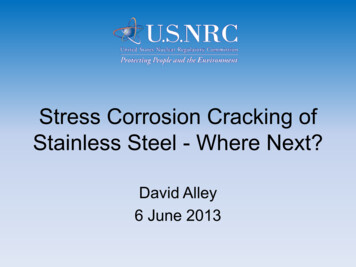
Transcription
Stress Corrosion Cracking ofStainless Steel - Where Next?David Alley6 June 2013
Agenda IntroductionCommon KnowledgeInteresting EventsPotential LessonsWhere to look next?2
Introduction Will consider 300 series stainless– Environmental conditions leading to cracking– Cracking morphology3
Common Knowledge4
Common Knowledge Cracking environments– Chlorides (halides) Maybe others (sulfates)– Oxygen needed– Temperature 140oF– BWR normal water chemistry Very low chlorides if any– Grade makes little difference in Cl- cracking– Cold work makes cracking worse5
Common Knowledge Cracking morphology– Sensitized Intergranular cracking– Unsensitized Normally transgranularcracking6
Common Knowledge7
Interesting Events8
Interesting Events Canopy Seal WeldsCRDM Seal Housing J Groove WeldsCRDM Housing Welds 3 and 5Refueling Water Storage TanksReactor Vessel Leak Off LinesOD Pipe/Vessel Cracking9
Canopy Seal Welds 5 Plants Base metal and weld– 304/308/309 Transgranular Cl- verified High oxygenassumed Various housing types High stress10
CRDM Seal Housing One Plant Rack and PinionHousing Multiple failures 304 and 347 Transgranular Lower temperature Low flow area Cl-, O2 assumed11
CRDM Housing Weld 3 and 512
CRDM Housing Weld 3 and 5 Two plants Three failureoccurrences Rack and PinionHousings 40 housingsreplaced 316, 347, 348 Cl-, O2 assumed One dead leg One low flow Transgranular– Beach marks One instance– Manufacturing issues Affected stresses– Voids at crack initiation F- containing flux?13
CRDM Housing Weld 3 and 5Void at crackinitiationBeach Mark14
Refueling Water Storage Tank Chloride SCC OD originated Temp probably 140oF15
Reactor Vessel Leak Off Lines Both OD and ID cracking ID cracking– At “water level” in line– Oxygen and Chlorides assumed OD cracking– Lines used as handrails Chlorides from sweaty skin Not necessarily at welds16
OD Pipe/Vessel Cracking Chlorides in air Chlorides on hands Not necessarily at welds– Info Notice IN-2011-04 Can occur below dew point (Hygroscopic) Temperature 140oF Dry Cask storage– Info Notice IN-2012-2017
Potential Lessons18
Potential Lessons Sweaty hands cause cracking Cl- deposition from the air causes cracking Cracking will occur 140oF in airenvironments Cracking not limited to welds Stresses/strains including weld residualstress and cold work accelerate cracking Temperature accelerates cracking19
Potential Lessons Cracking occurs in PWRs– Dead legs help but not required– Reduced flow, O2, contaminants required? Attempts to call a location or environment“special” have fared poorly in light ofhistory20
Where to Look Next?21
Where to Look Next? All CRDM housings (not just rack andpinion)?– All welds (not just pressure boundary welds)?– Base material? Vessel internals out of main flow? Dead leg piping (especially if O2 entersduring outages)?22
Where to Look Next? Outdoor stainless material– Near coastlines etc.?– Exposed to dicing salts?– Exposed to saline groundwater?– Below 140oF?– Welded with F- containing flux?23
Stress Corrosion Cracking of Stainless Steel - Where Next? David Alley 6 June 2013 . Agenda Introduction . stress and cold work accelerate cracking Temperature accelerates cracking 19 . Potential Lessons Cracking occurs in PWRs - Dead legs help but not required
